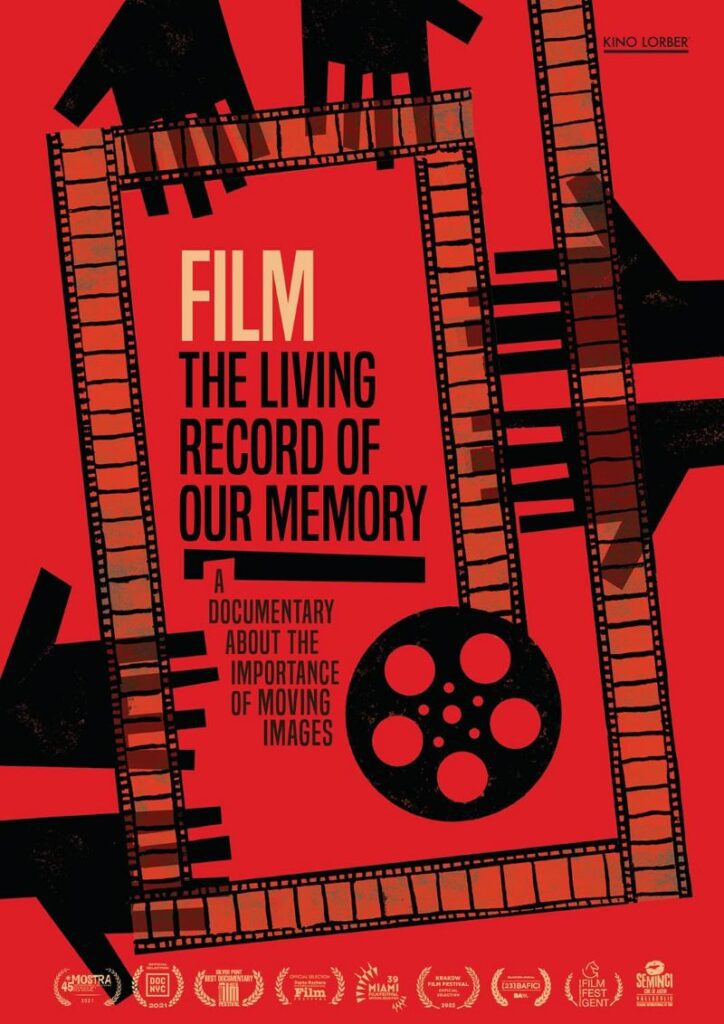
This new documentary takes a look at film preservation and restoration efforts underway around the world. We tend to think of these efforts as primarily being directed at saving classic Hollywood work, but this film takes pains to show that the initiative is indeed a global phenomenon.
Director Inés Toharia travels the world to interview film archivists, curators, and technicians about the work that goes into finding and restoring viable source material for deteriorated or lost films. Generally, the older the film is, the less likely a decent print/negative exists for restoration, resulting in most silent films being lost. This is partially due to the ephemeral nature of early productions, originally intended for only a brief theatrical run and then consigned to the dustbin of history. As one interview subject relates, the studios and theaters saw no urgency about preserving a Fred Astaire film for example, when another one would be coming down the production pipeline months later.
Toharia makes it clear that two big drivers caused a change in preservation mindset: TV and home video. Once TV gained popularity and needed more and more content to fill its ever-expanding channels, movies were an obvious choice. Then as consumers gained the ability to own films for home viewing, studios rushed to fill their shopping carts with the fruits of their decades of labor. Unfortunately, this ongoing exploration into their back catalogs revealed the loss and degradation of their crown jewels, leading to the rise of preservation and restoration.
The film includes plenty of heart-breaking footage of deteriorated films, some that are just solid melted blocks in their canisters, some that are reduced to powder, and others that are brittle and chipped. Sadly, that’s about where Toharia’s exploration stops, offering very little in the way of technical footage of how the films are restored to usable prints and then further cleaned up with digital tools. I was expecting a more in-depth look at actual restoration, but the focus here is more on how global organizations work together to find and evaluate usable stock.
Further broadening the scope, Toharia ventures beyond feature films to encompass restoration of personal home videos, as well as preservation of digital media. We assume that now that everything we personally shoot is digital, and feature films are restored digitally, they’re safe for all time, but Toharia’s subjects paint a sobering picture of the folly of that mindset. Perhaps the most illuminating moment of the film is when Toharia reveals the preferred storage media for all of the feature film restoration efforts. Spoiler: it’s not digital.
The film doesn’t have a narrator, leading to a bit of a scattershot approach as Toharia bounces from one interview subject to the next. Filmmaker interviews include Wim Wenders, Ken Loach, and Costa-Gavras, with additional non-exclusive appearances by directors including Martin Scorsese and Ridley Scott. Here again I felt like the breadth of the filmmaker coverage resulted in a surprising lack of focus on what I expected: Scorsese’s well-publicized efforts to rescue and restore important feature films from around the world via his World Cinema Project and associated Criterion DVD box set releases. As it stands, that work is barely an aside, lost in the noise of all of the other filmmakers.
The nature of this far-ranging project lends itself to much footage left on the cutting room floor. Thankfully, some of it is restored in the DVD bonus features, a generous assortment of brief clips that add more context to the film. The feature film is presented at 1.85:1 aspect ratio with Dolby 5.1 surround.
While the film is fascinating and well worth watching, Toharia’s no-limits ambition results in the feeling that the project is attempting to boil the ocean, trying to cover far too many bases in its limited two-hour runtime. Really, the material presented here would be more suitable for a limited series, which would allow the work to expand to match Toharia’s all-encompassing vision. Instead, we get tantalizing glimpses of the important ongoing work to preserve our global film heritage.